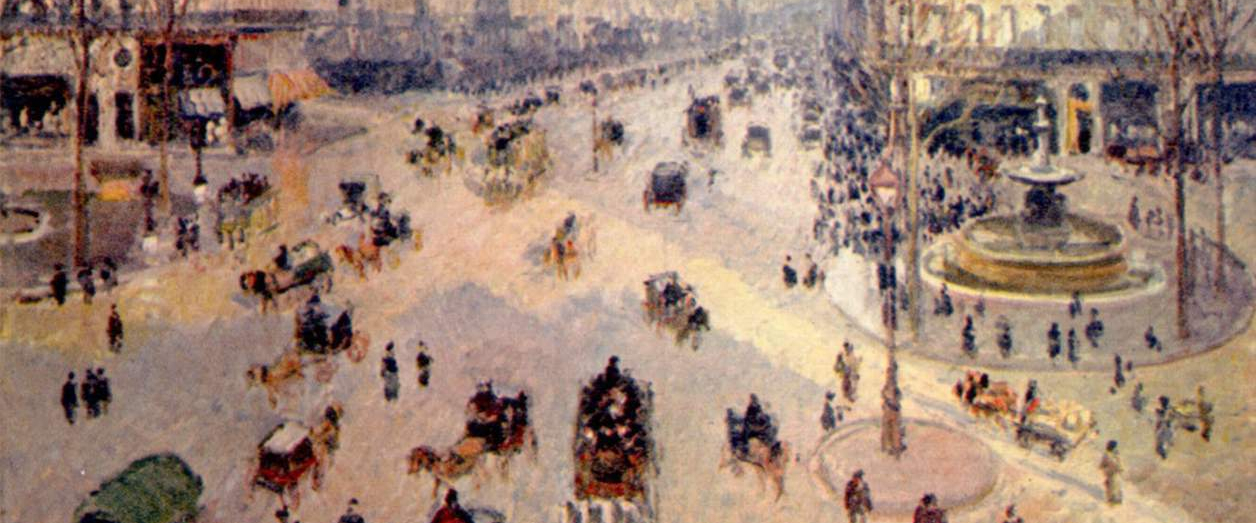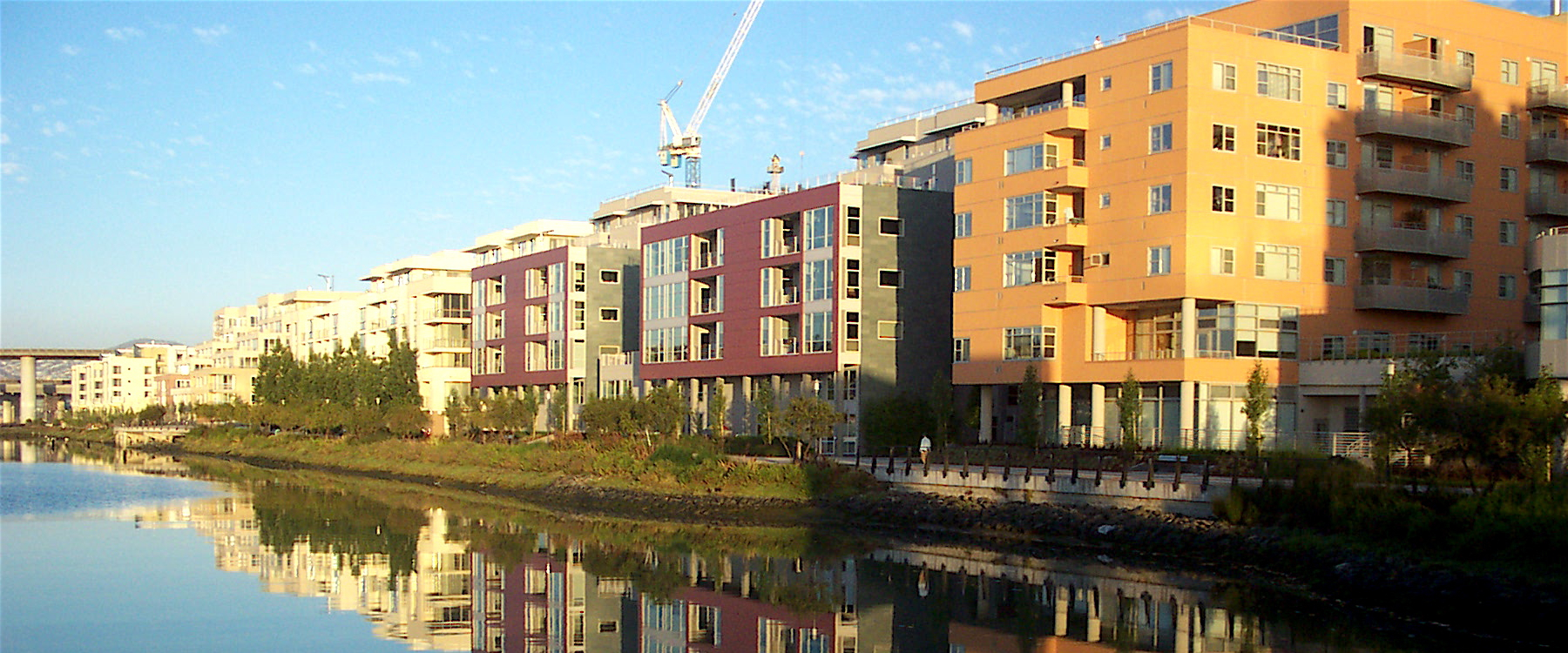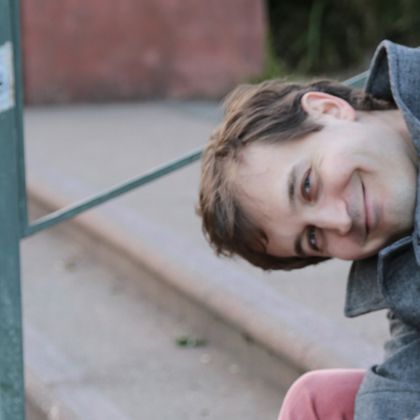Gentrification in Berlin's Kreuzberg neighborhood. (photo credit)
Is gentrification good for artists?
Living in San Francisco, you can’t avoid the anti-gentrification rants—and my fellow artists are some of the loudest participants. The Mission District, once a bohemian enclave, has become astronomically expensive and a playground for obnoxious Tech Bros. Longstanding arts organizations in SoMa and the Tenderloin have had to relocate or shut down to make room for new luxury apartments, to the point that the city is considering a tax on new development to subsidize nonprofits. Shady landlords find underhanded ways to evict rent-controlled tenants and sell the properties at a handsome profit. Even formerly unredeemable neighborhoods of Oakland have started to succumb to baby strollers, designer boutiques, and rising rents. All the while, artists and the poor get pushed out, and any last remnant of cultural life goes along with them. Or so the story goes.
In reality, gentrification has an artistic upside, even when you factor in all that bad stuff. Gentrification is not just about the disneyfication of formerly quirky neighborhoods at the expense of anything unique or original. Yes, some dumbing down does occur, but that’s only part of it.
For the people moving in—admittedly often whiter, more affluent, more conservative—gentrification is the reverse: it’s a cultural step up from the soulless suburbs most of them grew up in. Whether or not they move specifically for this reason, they can’t help but find themselves negotiating the cultural currents that urban life has to offer. The neighborhood may not be as edgy as it used to be, but it’s edgier than they’re used to, and this kind of cheek-by-jowl acculturation has always led to an increase in society’s appetite for art. For that reason, the current wave of inner-city gentrification will likely be a net positive for artists.
Nobody owns a neighborhood
Before we can get into how artists might benefit from gentrification, we need to take a closer look at what’s actually going on. First, it’s worth pointing out that all neighborhoods change constantly, especially the great ones. Dynamic neighborhoods do not arise spontaneously of their own accord; they are the product of contrasting cultural forces that ebb and flow over time. It’s inevitable that a city dynamic enough to produce a bohemian artistic scene will also have dynamic countervailing forces that undermine it. The glory days are simply a temporary point of harmony on a continuum of permanent change.
San Francisco’s Fillmore/Japantown neighborhood is a perfect example in this regard. Originally developed in the 1880s, it was first populated by Jews who turned it into a thriving working-class business district. Following the 1906 earthquake, large numbers of poor minority laborers were displaced, but the Jewish landlords of the Fillmore were receptive to housing them. This transformed the neighborhood into what was then one of the most ethnically diverse communities in the United States, with an especially strong Japanese presence, earning it the moniker Japantown.
When the Japanese attacked Pearl Harbor in 1941, the neighborhood changed almost instantly. Within hours, the FBI started arresting Japanese-Americans in the area, and virtually all of them were eventually forced to relocate to internment camps out of state. Most never returned to Japantown, and only a vestigial Japanese presence remains there today.
Meanwhile, the black community started filling the vacancies left by the Japanese. Japantown became the Fillmore, named after Fillmore Street, and it quickly developed into one of the most vibrant jazz scenes in America. The strip was lined with music venues and businesses, and the neighborhood thrived. It was poor and the housing stock was dilapidated, but it was a cultural center with an international reputation that lasted for over two decades.

Geary Boulevard separates Japantown from the Fillmore in San Francisco. Prior to construction of the freeway, they were one neighborhood. photo credit
But even from the start there were storm clouds. From 1948 on, the city began tearing down substandard buildings in the area, promising to replace them with subsidized housing that would “improve” the neighborhood. As critics feared, most of that construction was never completed, and many black residents relocated to Oakland, LA, or elsewhere.
Then America fell in love with freeway construction. Geary Street was widened into Geary Boulevard in 1959, dividing the neighborhood in half, shuttering businesses in the process, and ultimately destroying the jazz scene. The freeway exacerbated poverty, and more of the neighborhood fell into disrepair, violence, and blight.
Eventually, the upper half of Fillmore/Japantown started gentrifying, thanks to spillover from the tony Pacific Heights neighborhood next door. The lower half of the Fillmore, cut off by the freeway, did not follow suit; it stayed mired in crime and poverty until the 1990s when developers started building fancy condos there, causing rents to rise and pushing out most of the remaining poor residents. Today it’s an upper-middle-class neighborhood of shops, restaurants, and live music venues.
So who owns the Fillmore? The blacks? The Japanese? The Jewish landlords? The condo dwellers? Layer upon layer of injustice was committed, but each time the forces involved were more complex than one social group displacing another. An earthquake, a war, institutionalized racism, misguided city planning trends—these all conspired to create results nobody predicted. And let’s remember: the displacements and bifurcation the Fillmore underwent were bad, but so were the poverty and crime and rickety firetrap apartments that preceded them. Some wonderful things were destroyed, progress was made on other fronts, and on the long run the arts scene in San Francisco is none the worse for it.
The desuburbanization of America
It’s also worth considering why modern cities have so many areas that can be gentrified in the first place. It’s an anomaly of recent history that inner-city neighborhoods became dilapidated ghettos with cheap rent. Prior to that, poor people lived in crowded tenements surrounding a vibrant city core where the rich frolicked and consumed vast amounts of culture.
However, the industrial revolution made cities less attractive for the rich. Cities got dirtier and smoggier, the streets were gridlocked 24/7, and population growth led to overcrowding and disease. By the mid–19th century, it was actually faster to walk across Manhattan than to weave your carriage through the traffic snarls—though you might contract cholera in the process. So with the advent of streetcars first and automobiles later, the rich moved out, followed by the middle class. This trend was already well under way by the roaring twenties—sociologist Ernest W. Burgess first described it in 1925—but it really took off after World War II, largely thanks to the G.I. Bill. A landmark piece of social legislation, the bill provided returning soldiers (at least the white ones) with mortgage subsidies, free education, and business loans, and it is widely credited with fueling the exodus to the suburbs.

New York’s Mulberry Street in 1900. Getting around town during the Gilded Age was a serious pain in the ass. (photo credit)
As the middle class moved out, it created problems for the city: a glut of vacant housing, a collapse in property values, and a concentration of poverty and crime. With the decline of American manufacturing from the 1960s on, the factory districts of cities also started hollowing out, creating even more vacant space, unemployment, and poverty. Immigrants, minorities, the poor, and of course artists quickly claimed these dilapidated neighborhoods—out of necessity, not because they were nice places to live.
Nobody really knows why, but around 1995 the suburbanization trend went into reverse: Americans started moving back into cities at greater rates than they were moving out of them, and this reurbanization has accelerated ever since. All that previously unwanted housing in the inner cities was suddenly in demand, and prices have risen in accordance.
Complicating the situation, inner-city construction hasn’t kept up—in part because nobody was expecting the surge in demand, and in part because city bylaws have evolved to deal with the problems of decay, not growth. In San Francisco, everyone blames the tech companies for the housing problem, yet residents have tremendously broad veto power over new construction, which they regularly exercise to block the kind of high-density construction that would ease rents. Silicon Valley towns have it even worse, with NIMBY city councils that squash any and all density-increasing construction, even as office space in Menlo Park commands rates higher than Manhattan’s Fifth Avenue.
Back to the Belle Époque
Despite the bottlenecks, however, we are steadily marching toward a model of city life that looks more like the late 19th-century European capitals than like 20th-century suburbia: the inner city is expensive and gentrified, while the outer areas are poorer and less desirable. And that is good for the arts. The Vienna of Mahler and the Paris of Debussy were amazing cultural cities that made important contributions to the arts, and as urban scholar Alan Ehrenhalt has pointed out, they owed their famed vitality to gentrification. Without the iconic, master-planned boulevards that Georges-Eugène Haussmann imposed on Paris, we wouldn’t have had the cultural scene that supported Renoir, Matisse, Degas, Satie, and Ravel. Similarly, when Vienna demolished its medieval wall and turned the land into a giant ring road, it created the catalyst for that city’s famous café culture, where the likes of Freud, Klimt, Kraus, Schoenberg, Zweig, Loos and many others developed their work.

Camille Pissarro’s 1898 painting of l’Avenue de l’opéra, one of the grand boulevards that Haussmann superimposed on the Parisian streetscape.
Not everything was peaches and cream, naturally. There are striking similarities between the cultural capitals of old and modern third-world metropolises: a small core of wealth and privilege surrounded by vast slums and tenements. Let’s hope we don’t recreate that pattern exactly, but let’s not put our heads in the sand either. All evidence suggests that inner cities are going to continue gentrifying whether we like it or not. There are better and worse ways to manage that shift, but if we do it right, why wouldn’t it lead to a flourishing of culture just as it has in the past?
After all, urban living arrangements create an appetite for art, and rich assholes are the ones who bankroll the stuff. A fairly robust body of research has arisen to support the folk wisdom that cities attract culture-loving liberals while suburbs attract individualistic conservatives. There’s a bit of a chicken/egg debate as to the why of it all, but for our purposes it doesn’t really matter if dense cities create liberals or if preexisting liberals are just more likely to move to cities. Either way, the demographic trend is clear: people are moving into American cities at rates not seen since the 19th century, and that augurs well for arts and culture.
Of course Tech Bros do not instantly become opera fanatics upon moving to the Mission. They are, however, much more exposed to the arts than they would have been had they stayed in isolated, suburban McMansions where your only source of information is Fox News. We know that people are highly susceptible to peer pressure when it comes to artistic tastes. Studies of pop song listening habits have shown that when you give people songs they haven’t previously heard and pair them with popularity data (whether “likes” or number of Spotify plays or official Billboard ratings) they tend to prefer the ones with the highest rankings—even if you make up the numbers. As former suburbanites with no particular predilection for the arts move into cities, they will meet people who are arts lovers, and the tastes and interests of the newcomers will evolve—at least on the aggregate level—to become more art-friendly.
Finding a place to live
What about the rising cost of living, you say? After all, as of October 2014, the average rent in San Francisco was $3,413/month. If artists can’t afford to live in cities, then will cities continue to foster art? Well in an absolute sense, no, of course they wouldn’t. But we’re not anywhere close to seeing that happen; there are plenty of places to live.
Greenwich Village often gets put up as the poster child for gentrification killing off an arts scene, but it’s not like New York dropped off the cultural map when the neighborhood got yuppified. Artists just moved to other neighborhoods—first SoHo and TriBeCa, now Bushwick or Astoria or out in the Hudson Valley or whatever. Similarly in the Bay Area, the Fillmore and SoMa and the Mission have gotten too pricey for artists, but there are Richmond, West Oakland, San Leandro, and many others to chose from. So yes, the commutes of artists are unlikely to get better anytime soon, but we are far from running out of inexpensive housing.

A cyclist in Greenwich Village, post gentrification. (photo credit)
Besides, cheap rent is not the whole formula. When you look at important cultural scenes, they have three things in common: they have cheap rent, they are temporary, and there’s always a mass of affluent art consumers nearby.
Greenwich Village of the ‘50s and ‘60s (and New York in general over the past century) was culturally vibrant not only because of the inexpensive cold-water flats, but because it was within the orbit of a large group of rich tastemakers and socialites. Berlin after the wall came down was a similar story: cheap East Berlin flats next to the wealthy West Berlin business districts. Go back further to Belle Époque Paris and you’ll find Haussmann’s boulevards populated by the rich elite, all within striking distance of the artistic enclave of Montmartre. Conversely, this is why Philadelphia, Cleveland, Detroit and other rustbelt cities have failed to attract cultural scenes as rich as New York, San Francisco, Chicago, or LA: they have the cheap housing, but they no longer have dynamic economies with the clout necessary to generate a cadre of idle rich.
Dancing with the devil
There are very few artistic scenes that don’t rely on this symbiotic connection between creators and elite one-percenters, at least indirectly. Off-Off-Broadway, to give one example, couldn’t exist except as a counterpoint to the more established theater underwritten by rich philanthropists and businesspeople. What would happen if an experimental troupe sprung up in a city with no mainstream theater? Nothing, that’s what. The scene would remain completely unknown. Then it would stagnate, since there wouldn’t be that perpetual stream of young artists coming in to refresh it. In the best-case scenario, intrepid pioneers might set up something good in Nowheresville, USA—but they’d just be making art for their friends, with no impact on the outside world, and the whole enterprise would die off with them.
For an influential artistic scene to evolve, it needs to support a diverse range of practices, from the avant-garde to the commercial. These practices challenge each other, inform each other, and raise the collective bar. Their interplay creates a buzz that draws in new artists, generating a virtuous circle of revitalization and creativity beyond the scope of any one artist’s career. The avant-garde brings fresh ideas and scandal, the mainstream provides money and celebrity, and everything in between serves as a conveyor belt of ideas within the broader cultural conversation.

A row of expensive apartments on San Francisco’s Mission Creek, formerly a gritty industrial area. (photo credit)
I know this will be an uncomfortable narrative for many artists, but the presence of a wealthy elite is not optional in this equation. After all, the reason Pittsburgh punches above its cultural weight is not only because it has cheap rent, but because the Heinz, Mellon, and Benedum estates have made it their priority to fund the city’s arts scene and gentrify its core.
Almost without exception, the celebrated arts scenes of history have been inextricable linked with wealth and privilege, despite the fact that the artists themselves rarely share in the spoils. Economist Thomas Piketty has demonstrated that Belle Époque Europe for all its cultural contributions was also the historical peak of wealth inequality, and I doubt that timing was a coincidence. So yes, gentrification does pose important challenges to society—I just don’t think the death of the arts is one of them. Our responsibility as artists, therefore, is to approach this situation with eyes wide open, and try to find ways to keep the good while minimizing the bad.
But regardless of how things ultimately play out, the Tech Bros have arrived, and they have to live somewhere. So they can either live in monocultural suburbs, where life is insular and devoid of contrasting worldviews, where they will vote conservatively and deprive the arts of support. Or they can live in cities, where life is much more pluralistic and full of contrasting viewpoints, where they will vote more progressively and take part in the arts. Given that choice, I’ll take what’s behind Door #2.


